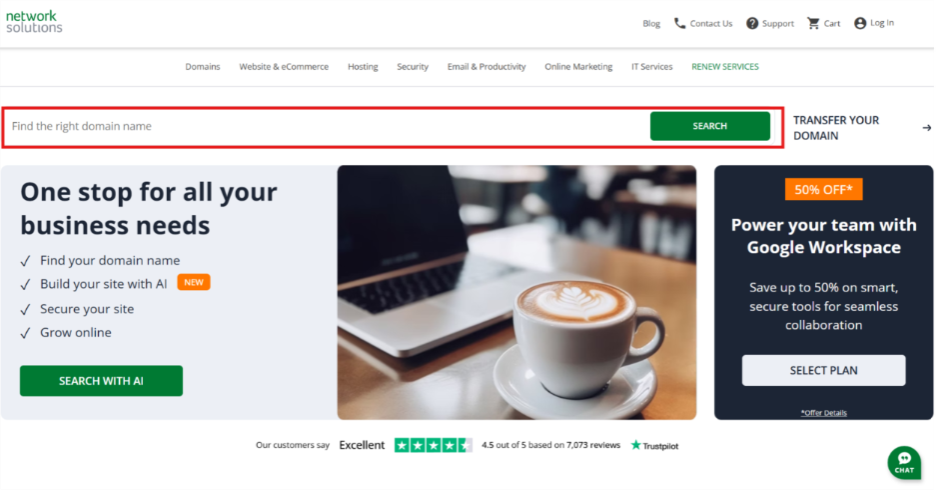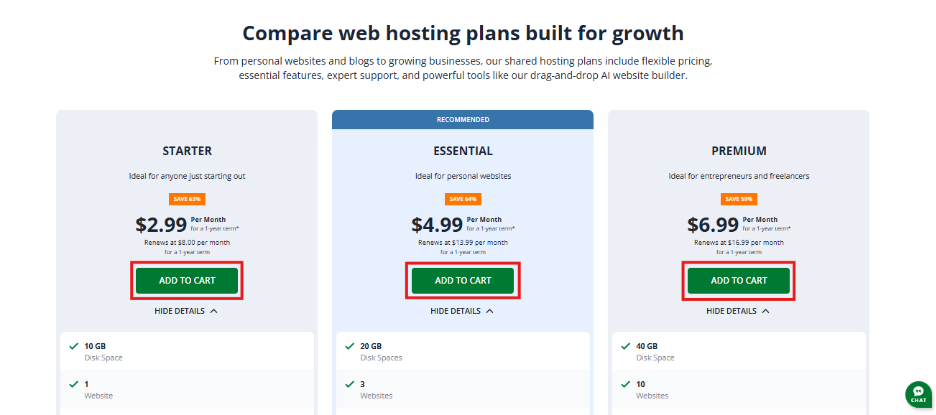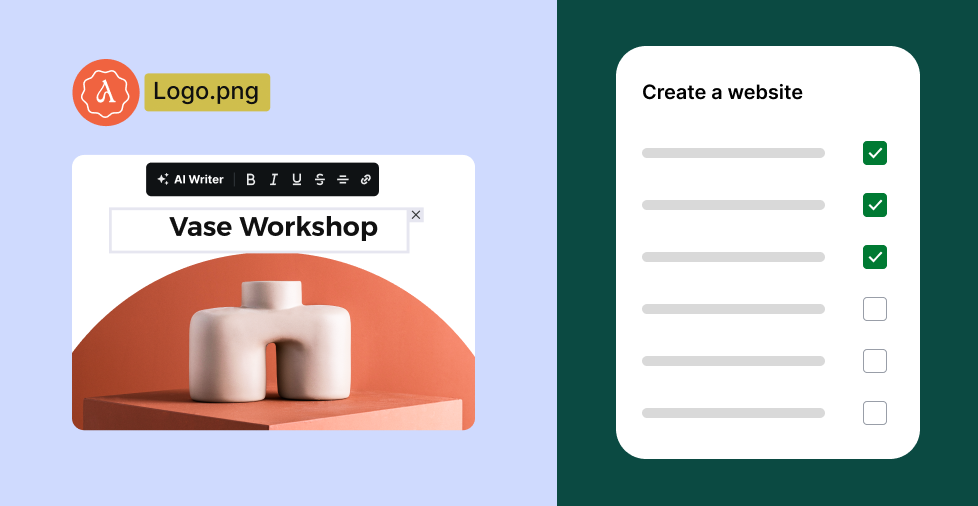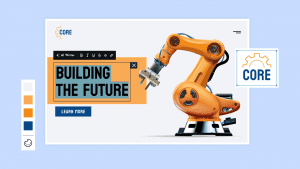Key takeaways:
- Building a website in a day is possible with the right tools and preparation, but simplicity is key.
- Choose the right website builder and plan your content in advance to help speed up the process of building your website.
- Avoid common mistakes, like overcomplicated designs, neglecting mobile optimization, and unprepared content.
Building a website often feels like a long and complicated process. But what if you’ve got a launch event on the next day, a last-minute investor meeting, or an opportunity that needs your brand’s presence right away? The idea of creating a professional website in just a day seems impossible, but with the right preparation, mindset, and tools, it’s more achievable than you think.
If you have everything ready to go, this article will show you how it’s possible to build a website and get it live in a day. We’ll also cover common mistakes when building a website and things to do before launching it for success.
Why is building a website faster than you think?
The reason why most people believe that building a website takes weeks is because they imagine custom designs, complicated coding, and endless revisions.
That may be true for large eCommerce platforms or highly customized sites, but smaller business websites, portfolios, and landing pages don’t need that level of complexity.
With AI-assisted tools and modern website builders, most of the work has already been done for you. Templates, drag-and-drop editors, and built-in integrations let you launch quickly while you’re focused on creating good content and sharing your message.
If you’re aiming for a large-scale website, a day might not be enough. But if your goal is a professional, functional, and mobile-friendly website, then yes, you can do it even in less than 24 hours.

How to make a website in a day: A quick 7-step process
If everything is prepared on your end to build a website, here’s a step-by-step process to help you get started:
Step 1. Secure your domain and hosting
Step 2. Decide on your website builder
Step 3. Choose a template
Step 4. Add your content
Step 5. Customize your design
Step 6. Add features and optimize for SEO
Step 7. Launch and promote your site
Step 1. Secure your domain and hosting

A domain name is your website’s unique address on the internet, and it’s crucial for establishing your online identity. Choosing the right one can make a difference in your website building process.
But if you haven’t thought of a domain name yet or can’t think of any, you can utilize an AI domain name generator. Simply enter your keywords and descriptions into the search box and the tool will instantly generate a name for you.
Once you have chosen a domain, register it with a reliable domain provider. The registration process might sound overwhelming, but it’s easier than you think it is.
Next is to choose a hosting plan. Web hosting provides the space to store your website’s files and makes your site accessible online. Without hosting, your website won’t be visible to customers.

Step 2. Decide on your website builder
If you’ve decided to rely on a website builder to create your site, it should meet your needs. Here are some tips to help you choose the right one:
- Look for a builder that’s easy to use and with drag-and-drop features.
- Choose one with customizable templates to match your brand’s style.
- Make sure the builder is mobile-friendly, so your site works well on all devices.
- Prioritize builders that include essential SEO tools and eCommerce features.
- Check for good customer support in case you run into any issues.

If you want a credible, professional-looking website, we offer a reliable website builder starting at just $1.95/month, so you can launch your business or blog without headaches.
Step 3. Choose a template
Once you’ve picked your builder, select a template that suits your business. Many eCommerce platforms offer customizable templates, which helps you create a professional-looking site without needing any coding skills.

Step 4. Add your content
Your website content is the foundation of your site. This includes your homepage headline, service descriptions, and contact information.
Without these, visitors won’t understand who you are, what you offer, or how to get in touch with you. Clear, well-written content builds trust and guides your visitors through their experience.
Also, don’t overlook high-quality images because these helps communicate your message, showcase your services or products, and make your site visually appealing.
All this content should work together to provide a seamless, professional experience for your audience.
Step 5. Customize your design
Your website design is one major element of your website that creates a lasting impression. To make a strong impression on your customers, here are some tips to consider when choosing a design:
- Choose a theme that’s optimized for all screen sizes for a seamless experience for mobile users.
- Make it easy for customers to find products, check out, and contact you. Simple, intuitive navigation enhances the shopping experience.
- Customize your theme to match your brand’s style, including colors, fonts, and imagery. Consistency builds recognition and trust with your customers.
- A well-designed site should load quickly to avoid frustrating users and potentially losing sales.
But if you don’t have the design skills or time to customize your site, our experts can help you craft a custom web design that aligns with your business needs.
Step 6. Add features and optimize for SEO
To optimize your website for SEO from the start, focus on these quick tips:
- Use a fast and reliable platform, compress images, and enable browser caching to improve load times.
- Make your design is responsive and test across various devices to for a smooth user experience.
- Identify relevant keywords and use them naturally in your content, headings, and meta descriptions.
- Craft compelling, accurate title tags and meta descriptions to boost click-through rates.
- Create a sitemap, follow crawlability, fix broken links, and improve your site’s structure.
If you want a systematic approach to SEO and skip the guesswork, our professional SEO services can help. Just fill out our contact form, and our team will reach out to discuss how we can boost your site’s performance.
Step 7. Launch and promote your site
Once your site is ready, it’s time to launch it. After launching, you can monitor your site’s performance using analytics tools such as Google Analytics or SEMrush.
These tools help you track traffic, sales, and customer behavior, giving you valuable insights to improve your site and marketing efforts.
Also, keep engaging with your audience through email, social media, and loyalty programs to foster long-term relationships and encourage repeat business.
4 essential things to do before launching your website
To make your website effective and ready for launch, here are the key steps to take before hitting publish:
- Establish branding elements
- Source and optimize your images
- Review content for accuracy and clarity
- Test your website’s functionality
Establish branding elements
Your website should instantly feel like an extension of your brand. Focus on three essential elements: fonts, colors, and consistency. Here’s how you can do it:
- Use two fonts across your site: one for headings and one for body text. Keep your fonts as simple as possible. Headings should stand out and body text should be easy to read. Using more than two fonts can clutter your site.
- Choose two to three colors that fit your brand. One should be your primary color (for key elements like buttons), and the others should complement it for accents. This keeps your site look clean and professional without overwhelming your visitors.
- Be consistent with fonts and colors across all your pages. This builds a consistent, professional look, making your website feel cohesive and trustworthy.
When these elements are aligned, you build an identity for your brand. This can make a big difference in how your site resonates with visitors and builds trust.
Source and optimize your images
Images can either make or break your site’s first impression. If you don’t have professional photos yet, use high-quality stock images from trusted sources like Unsplash or Pexels.
Optimize them for fast loading times. Slow load times can drive visitors away, so be sure that images are the right size and format to keep your site running smoothly.
Review content for accuracy and clarity
Nothing sends visitors running faster than a website full of typos or confusing messages. So, before you hit the Publish button, do a quick content review. Go over your homepage, about page, services, and contact details.
Check for clarity, grammar, and spelling errors. Don’t just rely on a spell-check tool and read through it yourself, or better yet, ask someone else to give it a quick glance. This ensures your content not only reads well but also reflects your brand in the best way possible.
Test your website’s functionality
Testing might not be the most exciting part of building a website, but it’s important to confirm that all parts of your site are working properly before going live. Here’s a quick process on how you’ll do it:
- Test your contact forms to see if they submit information correctly.
- Check your buttons to make sure they’re linking to the right pages or actions.
- If your site has eCommerce features, go through the checkout process yourself and see if everything is running smoothly.
- Test your links to make sure they lead to the right places.
- Check that your website loads quickly on both desktop and mobile.
7 mistakes business owners make in building a website
Even with tools and services, many business owners still struggle with finishing their websites. Here are the key mistakes that often hold them back:
- Overcomplicating design choices
- Not preparing content beforehand
- Overloading the website with many pages
- Neglecting mobile optimization
- Adding too many website elements
- Overlooking security measures
- Not optimizing website for SEO
Overcomplicating design choices
When you’re in a rush, it’s tempting to focus on making your website look perfect. You might spend hours tweaking fonts, adjusting colors, and experimenting with layouts.
But most visitors don’t care about intricate design details—they care about clarity and accessibility. A clean, professional website design with consistent branding will work better than something complicated.
Overthinking a design can waste time and prevent you from getting your website live.
Quick tip: Stick to simple, pre-designed templates and make small adjustments instead of starting from scratch. Focus on delivering a functional site with strong branding, not a complex design.
Not preparing content beforehand
Building a website can sometimes be exciting, but rushing to the design phase without a content plan is prone for delays.
Many first-time builders get halfway through the project and realize they need to stop and write their copy or look for images. This slows down or even stops the process or even leads to pressure and poor content quality.
Quick tip: Write your homepage copy, service descriptions, and About page text, and gather high-quality images in advance. This lets you focus entirely on the layout and functionality when you start building.
Overloading the website with many pages
Many people assume that a website needs to have multiple pages to be effective. But this is actually a common misconception. A well-structured, single-page website can often be just as effective, especially when you’re launching quickly.
Having too many pages requires excessive content writing, design adjustments, and navigation setup. This leads to prolonged development and delays in launching your site.
Quick tip: Start with a minimal but functional site and add additional pages as needed later on. Focus on core pages: home, about, services, and contact. Keep your layout clean and concise.
Neglecting mobile optimization
According to recent statistics, mobile devices (including smartphones and tablets) now account for 58.39% of global web traffic, yet many people only build their site on desktop view and ignore how it looks on mobile.
When it’s time to test, they realize that their site isn’t responsive, which means it doesn’t display correctly on smartphones or tablets. This forces rushed fixes and adjustments and only wastes your time.
Quick tip: Prioritize mobile optimization as you build. Many website builders offer built-in mobile responsiveness features, but always check that it looks good across devices during the building process.
If you’re unsure how to optimize your website for mobile, there are effective tips available to help you get started. Whether it’s for improving load times or enhancing the mobile user experience.
Adding too many website elements
A messy website can overwhelm visitors, especially when they are trying to navigate it quickly. Too many images, text blocks, or buttons can make it hard for users to focus on the key message or take action.
When there’s too much going on, it becomes difficult for visitors to find what they need, which leads to frustration and higher bounce rates.
Quick tip: Keep it simple and focus on a clear, streamlined layout that highlights the most important information. Use white space effectively to allow content to breathe and make the site easier to navigate. Whether customers are making a purchase, signing up, or learning more about your business.
Overlooking security measures
Many beginners overlook security which can expose their sites from online attacks or malware. These attacks could ruin your reputation and trust with users. It’s essential to observe basic security measures are in place to protect both your site and your visitors.
To protect your website from security threats, follow these quick essential steps:
- Enable SSL encryption for secure connections between your site and users.
- Regularly update your CMS, plugins, and themes to protect against known vulnerabilities.
- Use strong passwords and enable two-factor authentication for added security.
- Implement firewalls to prevent unauthorized access to your site.
- Back up your site frequently so you can recover it in case of an attack or data loss.
If you’re looking for an easy way to implement these security features, we offer SSL certificates and SiteLock for complete website security and malware protection. These tools help safeguard your site and keep your visitors safe.
Not optimizing website for SEO
Without search engine optimization (SEO), your website may be buried or not show up in search results. While SEO doesn’t directly impact your site’s ranking, it plays a critical role in improving visibility.
This can lead to disorganized content, missing meta tags, slow-loading pages, and unoptimized images. If your site doesn’t use the right keywords or have a clear structure, search engines will have trouble understanding and ranking your site effectively.
Build and go live in 24 hours
Building a website in a day might feel impossible at first, but it’s all about keeping it simple. Focus on making your content clear and ready, pick the right tools, and avoid common mistakes. You’ll be able to launch quickly, whether you’re building for an event, a meeting, or just to get your brand online fast.
If you’re ready to get started, build your website with Network Solutions. Choose from 100+ ready-made templates and customize them with our AI-powered website builder to launch quickly, with fewer steps and without the headaches.
Frequently asked questions
Yes, it’s possible to build a website in a day, but it depends on the complexity. Simple websites, like those created with website builders, can be done quickly.
More complex websites, such as eCommerce sites, may require more time. You can build a simple website with a builder or template in less than 24 hours.
Creating a website typically takes anywhere from a few days to a few months. A basic website could take 2-4 weeks, while larger, more complex sites might take 2-6 months. The time it takes depends on the complexity of the site and the tools used.
Building a website in one hour is possible using website builders with easy drag-and-drop features and pre-designed templates. You’ll need to choose a platform, pick a template, add content, and publish it. It’s best for simple sites or landing pages.
ChatGPT can’t directly build a website, but it can help by generating code, suggesting design ideas, and assisting with content creation.
While it can speed up the process, human input is still necessary for creating a polished, fully functional website.




